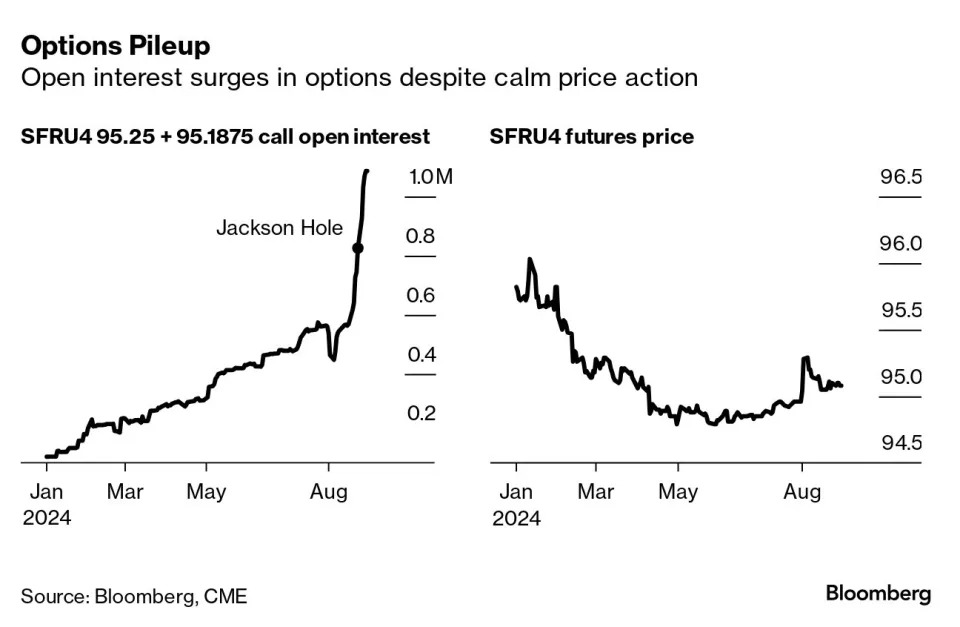A slew of weaker-than-expected economic data, highlighted by July's jobs report triggering a closely watched recession indicator , has sent the stock market tumbling .
Across the first two days of August, the S&P 500 ( ^GSPC ) slid 3.2% while the Nasdaq Composite ( ^IXIC ) sank 4.7%. The moves extended a previous drawdown in the Nasdaq, with the index entering a correction after falling more than 10% from its latest high reached in mid-July.
"Markets seem to be treating bad news as bad news again, not a positive catalyst given an easy Fed outlook," Citi's head of US equity strategy, Scott Chronert, wrote in a note to clients on Friday.
"Investors are even starting to ask recession-related questions and have started to review their economic slowdown playbooks."
Two weaker-than-expected data prints on Thursday — the lowest US manufacturing activity since November 2023 and the highest weekly unemployment claims reading in roughly a year — initially sparked this week's selling.
Friday's employment report, which showed the second-weakest monthly job additions since 2020 and the highest unemployment rate in nearly three years, accelerated the action.
The small-cap Russell 2000 ( ^RUT ), which had rallied over the past month as markets grew more optimistic about interest rate cuts, has fared even worse, falling more than 6.6% across the last two trading sessions.
Defensive sectors like Utilities ( XLU ) and Consumer Staples ( XLP ), which usually outperform in an economic downturn, are among the market's only gainers since Wednesday. Utilities rose roughly 2%, while Consumer Staples gained 1.8% compared to the S&P 500's more than 3% decline.
Taken together, this trading action marks a clear shift in how markets are weighing economic data.
Piper Sandler chief market strategist Michael Kantrowitz told Yahoo Finance that slower economic data may have been "good news a year ago when everyone was worried about inflation — that's not the case today."
The weak data has also sparked a rally in bonds, sending Treasury yields tumbling. The 10-year Treasury yield ( ^TNX ) dropped more than 40 basis points in the past week, hovering near 3.79%, its lowest level since December 2023.
Markets are now pricing in more than four interest rate cuts from the Federal Reserve in 2024, or more than 100 basis points cumulatively, up from fewer than the three cuts seen a week ago, per Bloomberg data.
And data from the CME FedWatch Tool shows investors are now pricing in a nearly 70% chance the Fed will cut rates by 50 basis points in September, up from just a 6% chance a month ago.
For investors, though, the key remains why the Fed would cut rates.
"When yields go down, it could still be a good thing going forward if it comes from lower inflation," Kantrowitz said. "But [not] if it comes from higher unemployment, bad [manufacturing data], bad earnings, and bad macro data."
In prior episodes where investors priced in more Fed rate cuts, stocks rallied, such as late last year .
But this time could be different if the central bank is cutting rates because it's worried about a slowdown in the economy.
"The Fed needs to guard against a scenario where the rise in the unemployment rate triggers a reinforcing cycle of reduced incomes and spending and more job losses," Oxford Economics' lead US economist Nancy Vanden Houten wrote in a note to clients on Friday.
Still, at least for now, that outcome remains just one of several possibilities.
"With the benefit of hindsight, it’s easy to say the Fed should have cut this week," JPMorgan chief US economist Michael Feroli wrote in a note to clients on Friday. "It’s also easy to say they will cut soon. How soon and how much are harder questions."

Josh Schafer is a reporter for Yahoo Finance. Follow him on X @_joshschafer .





